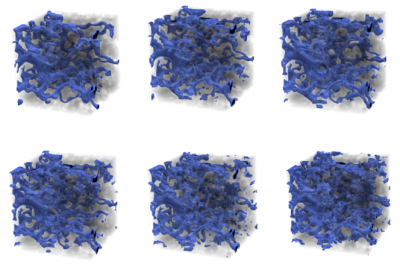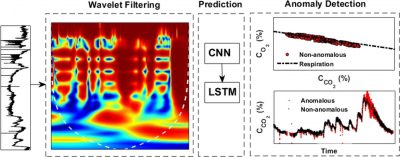Research
Computational Modeling of Multiphase Flow in Porous Media
We study modeling and characterization of multiphase flow in porous media with application in the areas of energy and environment. We have developed a pore-scale fluid flow simulator using the lattice Boltzmann method. Our simulator is a powerful tool, which can handle multiphase flow simulations in geometric features obtained from the X-ray tomography image data of realistic rock formations. To improve the computational efficiency of simulations, the model has been applied to a parallel scheme written in C++ using the Message Passing Interface (MPI). We use high performance computing facilities of the Texas Advanced Computing Center (TACC) to perform the intensive simulations.
To learn more, please see Bakhshian et al., Sci. Rep., 2019.
Microfluidics Experiments
In the Micromodel lab at the Bureau of Economic Geology, we conduct microfluidics experiments aimed at delving into the pore-scale flow behavior in porous media, with a specific emphasis on CO2 storage dynamics. Combined with imaging techniques, these microfluidic experiments provide real-time visualization of multiphase flow and dynamics in micro-structures of porous media, having the potential to play an important role in characterizing and optimizing fluid flow in CO2 storage operations. Our investigations entail the utilization of etched silicon and real-rock micromodels to investigate the effect of pore-scale properties (e.g., microstructural heterogeneity, wettability) on the characteristics of CO2 displacement and entrapment in heterogenous porous media.

Risk Assessment of CO2 Storage
Our research delves into the primary environmental concern linked with CO2 storage, focusing on the potential for CO2 and brine leakage into underground sources of drinking water (USDW) and the atmosphere. Through multiphase flow and reactive transport simulations, we aim to construct a probabilistic model to forecast leakage via legacy wells and to assess its consequences on various environmental receptors. The probabilistic risk profile serves as the foundation for a cost model, which in turn will guide the development of a commercial insurance and bonding framework tailored for CO2 storage.
Environmental Monitoring of CO2 Storage Risks
We present a cost-effective monitoring solution designed for the continuous, long-term surveillance of wells that have undergone plugging and abandonment (P&A), yet remain an environmental, financial, and liability risk for CO2 storage operations. Our approach involves a field experiment conducted at UT’s Brackenridge Field Laboratory, focusing on CO2 and brine leakage through shallow “proxy wells.” This experiment enables us to closely observe how the shallow environment reacts to these leakage incidents. A comprehensive sensor package will gauge the surrounding environment’s reaction to the leaks. Leveraging advanced machine learning techniques, our data analysis aims to determine the most suitable sensor types and environmental parameters that exhibit heightened sensitivity to leakage.


